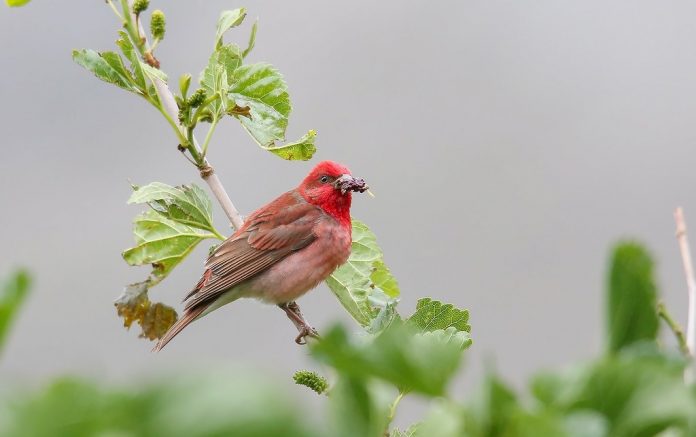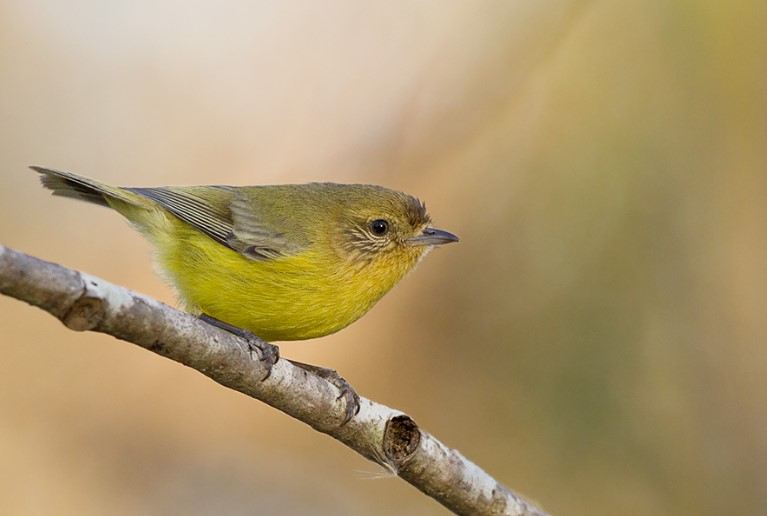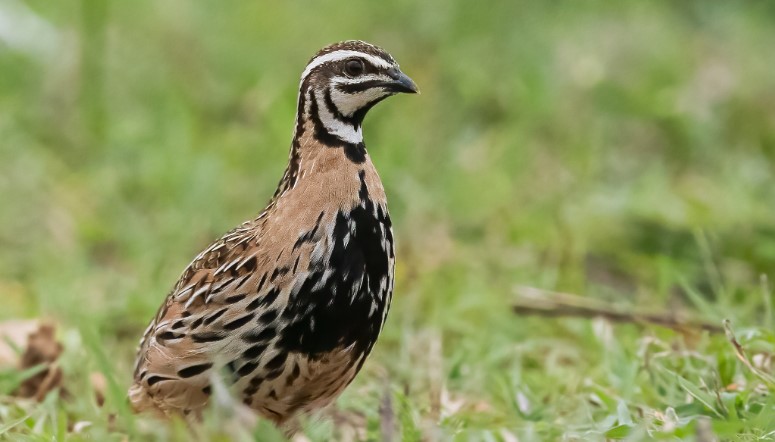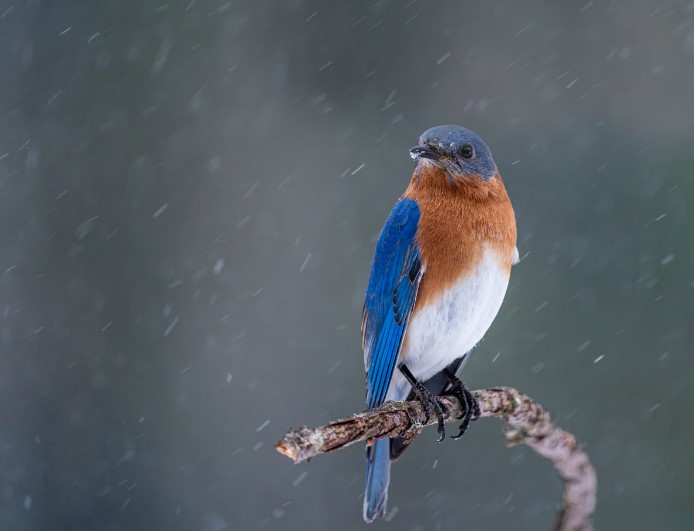IDENTIFICATION – Common Rosefinch (Carpodacus erythrinus) is the only widespread rosefinch in Europe and Asia. Everyone is likely to be encountered this beautiful rosefinch in trees and bushes. A medium-sized Rosefinch is measures 13-14.5 cm in length. The adult male full plumage has a deep redbreast, brilliant rosy-carmine head, and rump, stout and conical bill, but the extent of red varies with age and individual concerned.
The adult female is very drab, dull gray-brown with weakly darker-streaked upper parts and underparts, usually showing two weak pale wing bars and with a black beady eye on an otherwise plain face.
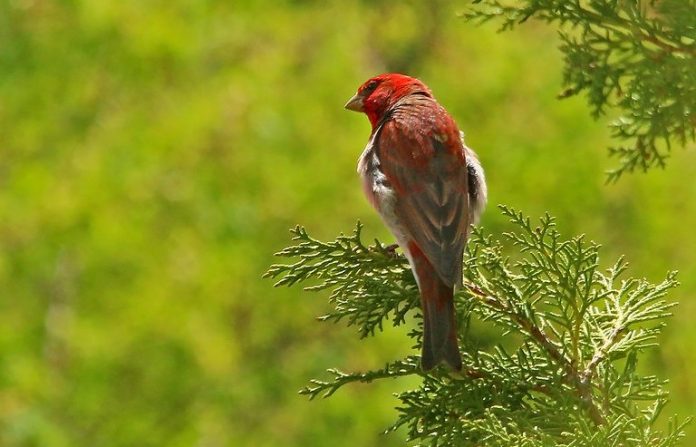
The very stout bill and black beady eye, no indication of any facial markings (including supercilium), no pale flashes in wings or tail, the streaked breast, and skulking behavior rule out confusion with all other similar species, e.g. juvenile European Green finch or female House Sparrow.
Often attracts attention by its very distinctive song, as it is normally a cover-loving species, rarely feeding high up in trees. It is smaller and slimmer than the Corn Bunting with the less pronounced streaking below and darker legs, and much more skulking. Crossbills are bulkier, with a relatively shorter tail and crossed mandible tips, the females being greener or yellower and juveniles much more heavily streaked. It is also known as Scarlet Rosefinch, Scarlet Grosbeak.
SEX/AGE – Adult males in fresh plumage (autumn/winter) have a red head, upper parts, and throat to upper belly partly obscured by brownish feather tips on the head/upper parts and whitish feather tips on the underparts. The juvenile resembles an adult female, but is brighter overall, with much more obvious wing bars and pale tertial tips (both tinged warm buff) and heavier streaking.
The post-juvenile molt is delayed until arrival in the winter quarters. 1st-years closely resemble adult females (although a few males show some red in plumage), males usually do not attain fully adult plumage until autumn of the second or even third calendar year!
VOICE – Common Rosefinch call is typically a sweet, clear, but slightly harsh ‘ueet’ or ‘shw’eek. It becomes a harsher, more European Greenfinch-like ‘djuwee’ when alarmed. The very striking song can dominate its woodland habitat: a clear flute phrase of three or four notes, rather plaintive and rising and falling in pitch, with a certain amount of individual variation, e.g. ‘ste-too-weet-tew’ (reminiscent of a ‘wolf-whistle’, but more complexes).
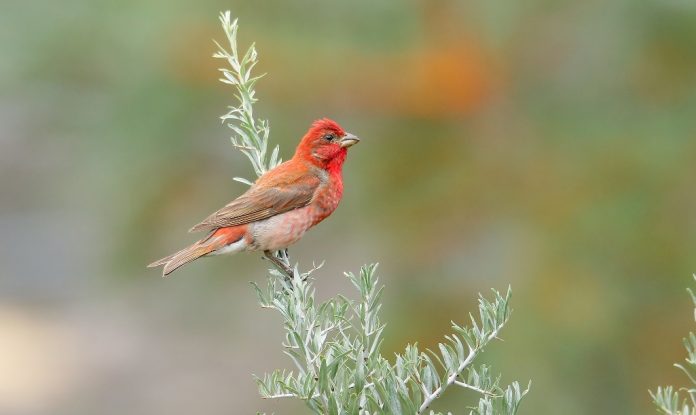
GEOGRAPHICAL VARIATION – Slight two races (nominate illustrated). Race kubanensis of Turkey and Caucasus eastwards is doubtfully distinguished from the nominate race by the paler, more rosy-red color of males.
HABITAT – It is a common range with wide-spreading slowly westwards. In addition to the mapped range, has been bred in Britain and more widely in mainland Europe, Crimea. Winters in S Asia deciduous or mixed woodland, thickets, riverside or lakeside willow scrub, damp and bushy meadows, orchards, Oak trees in parks, etc.
NEST & EGGS – Common Rosefinch normally built the nest low in a bush. On average the clutch contains 4 to 5 dark blue with coarse dark brown spots eggs.
DISTRIBUTION – Common Rosefinch widespread in Europe and Asia. This vibrant colors bird is observed in Portugal, England, Sweden, Siberia, Iran, Pakistan, Afghanistan, Tibet, Japan, China, India, Burma, and Sri Lanka. Here is the list of 30 Most Beautiful Finches in Asia.
